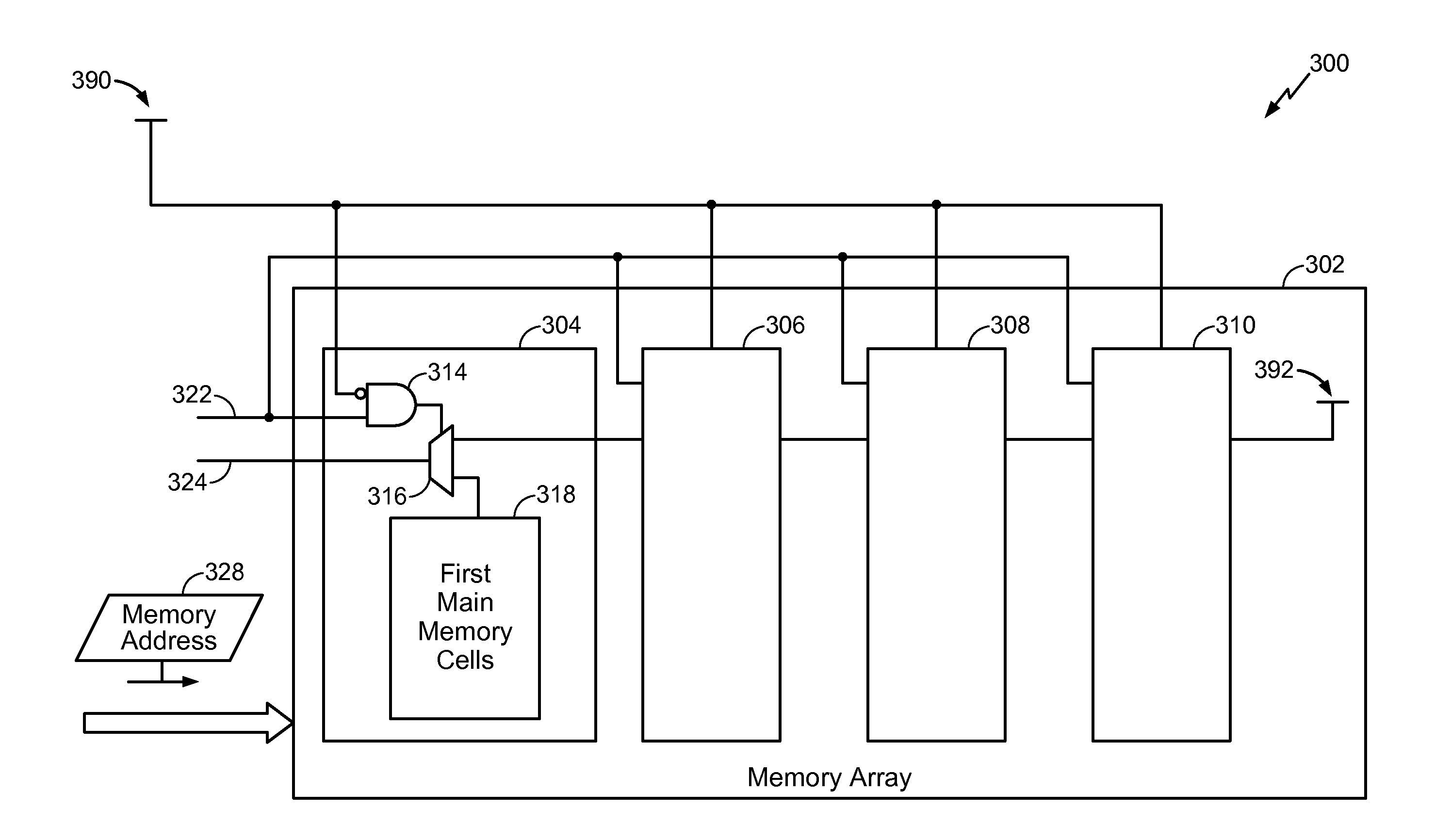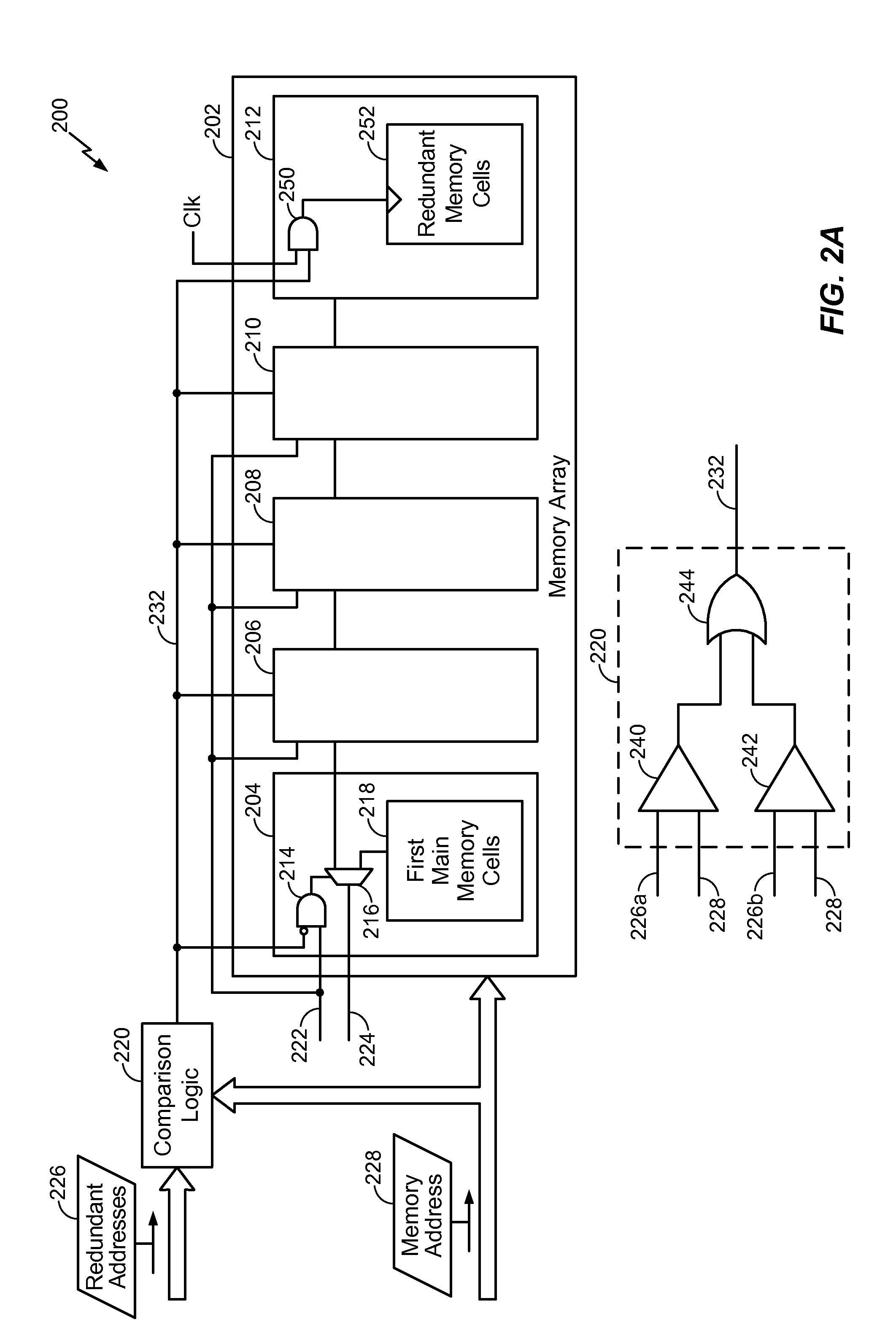Memory redundancy reduction
a technology of memory redundancy and memory device, applied in the direction of configuration cad, cad techniques, instruments, etc., can solve the problems of data read from the memory to differ from data written, data error rate due to fabrication errors may decrease, etc., to reduce the amount of defective memory locations in the main memory, reduce memory redundancy, and reduce the effect of redundant memory
- Summary
- Abstract
- Description
- Claims
- Application Information
AI Technical Summary
Benefits of technology
Problems solved by technology
Method used
Image
Examples
Embodiment Construction
[0018]Referring to FIG. 1, a particular illustrative aspect of a process 100 to reduce an amount of die area occupied by redundant memory on a memory device based on fabrication maturity is shown. The process 100 may be implemented using fabrication techniques and / or fabrication equipment, as described with respect to FIG. 6.
[0019]A first version 102 of a memory device (e.g., a first chip) may be designed at a computer. For example, during a relatively early stage of manufacturing, the computer may generate a first mask to produce the first version 102 of the memory device. The first mask may function as a “blueprint” to manufacture the first version 102 of the memory device on a wafer. For example, the first mask may be used during photolithography (and other wafer fabrication techniques such as wet etching, dry etching, deposition, planarization, etc.) to manufacture components of the first version 102 of the memory device on the wafer.
[0020]The first version 102 of the memory dev...
PUM
 Login to View More
Login to View More Abstract
Description
Claims
Application Information
 Login to View More
Login to View More - R&D
- Intellectual Property
- Life Sciences
- Materials
- Tech Scout
- Unparalleled Data Quality
- Higher Quality Content
- 60% Fewer Hallucinations
Browse by: Latest US Patents, China's latest patents, Technical Efficacy Thesaurus, Application Domain, Technology Topic, Popular Technical Reports.
© 2025 PatSnap. All rights reserved.Legal|Privacy policy|Modern Slavery Act Transparency Statement|Sitemap|About US| Contact US: help@patsnap.com



